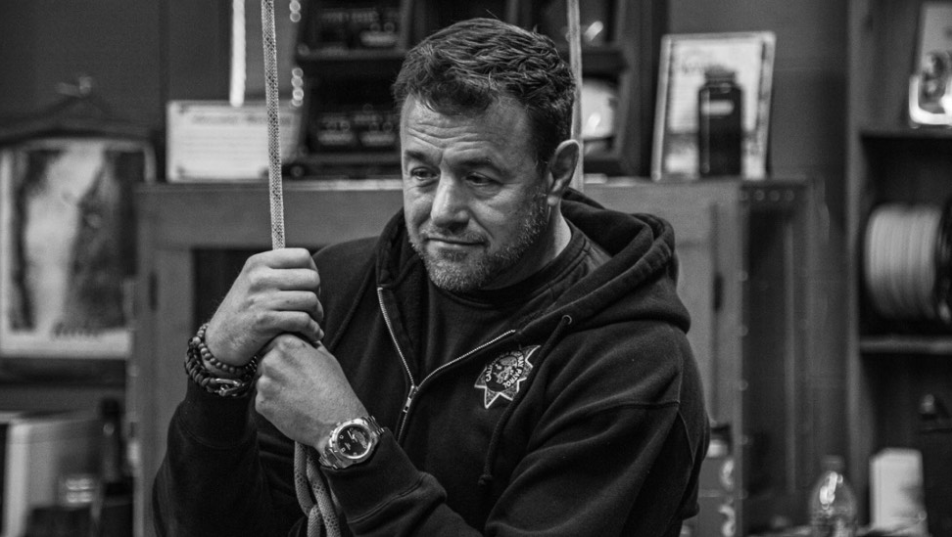
Through years of training I have developed my own educational process I follow when starting a new area of study. The framework of the process is a series of principles that guide me through my research and development. These principles keep me honest with myself, keep me open-minded, and force me to do the work that sometimes human nature will nudge you to let slide. One of the primary principles in this process is the “Think the Thought the Thinker Thought” principle.
Think the Thought the Thinker Thought
As I was training and coming up in martial arts, one of my teachers would tell me to “Think the Thought the Thinker Thought” I would ask what this meant, and he explained I should not just accept information blindly from teachers.
Instead, seek to understand what the original creator was thinking when they thought the thought in the first place. Seek to understand their environment, culture, and what problems they were trying to solve when they put together the information.
I was taught to identify the systems these creators utilized and then to study and train those systems.
Think about what were the creator’s physical attributes; big, small, strong, or weak? Did they have any physical disadvantages they sought to overcome? Seek to understand them better to comprehend better the wisdom and knowledge they have passed down.
This principle of the “Think the Thought the Thinker Thought” is not new. Many great instructors study more than just the history and do the physical practice in a system.
Sifu/Guro Inosanto has always told us to study the culture around the art, and it will better help us to understand the art. This statement has turned on light bulbs for me repeatedly throughout my years of study. Following Guro’s advice has led me to find and learn deeper levels of understanding in every area I applied his educational process.
The only true wisdom is in knowing you know nothing.
Socrates
Sijo Lee Designed a New Thought Pattern to Create Jeet Kune Do
The principle of “Think the Thinker’s thought” is vital to have a deeper knowledge of the system because of the way Sijo Lee created it. This principle is one factor in developing my journey in Jeet Kune Do.
I wanted to understand the systems from which the ideas, principles, and techniques were taken or studied to design the new thought pattern I.E. Jeet Kune Do. I identified Wing Chun Kung Fu, Chinese Boxing, Shaolin Kung-Fu, and Boxing as the systems that influenced Sijo Lee, the Thinker. Then, I sought out and studied with whom I considered the best instructors and/or sources of knowledge of these systems.
I have a different definition of study than most people. To thoroughly study something requires more effort than just practicing moves or reading a couple of books. It requires the student to challenge the information given, seek out the “why”, learn about the origins of concepts, and grow through the systems. Devote time and discipline to the art to achieve advanced levels of rank. In all martial arts, this journey will change you on multiple levels. This process will check your ego and make you grow in ways you cannot experience by just doing a study of the art or system.
Be a Perpetual White Belt
This means always looking for opportunities to learn. Keep your mind open, and be accepting of new information and ideas. I believe this is one of a warrior’s most valuable skills.
With the open mind of a child, we should strive to learn in every aspect of the journey. Because children have an open mind, they can learn and retain new information quickly, much more so than adults. This is because as we get older we develop preconceived notions, judgements and points of view.
Our mind’s inner landscape fills up with junk that blocks our ability or willingness to receive information at that speed and depth. Many times, we will reject new information because it does not fit into our ideas of what is valuable, or we don’t value the source of the information.
We also must realize we can learn something from every person and every experience.
As we age, we tend to slow down, making learning harder.
As a warrior educator, it is your job to fight that pattern to continue to always grow and learn.
At the time Sijo Lee developed JKD, the culture of martial arts considered it a bad thing to study multiple martial arts. Yet Sijo Lee did not follow the norms or opinions of the collective.
He was able to have an open mindset of learning to study multiple martial arts, and then utilize his knowledge and experiences to create JKD. To have a deep understanding of JKD, and to “Think the Thought the Thinker Thought,” you must be able to achieve this level of openness in your studies and practice.
This is all the more reason to strive for the mindset of learning. I believe all of the knowledge gained will help you understand the “Thinker’s thoughts” better, and hopefully understand this amazing art given to us by Sijo Lee.
Adapt what is useful, reject what is useless, and add what is specifically your own.
Bruce Lee
Being open to learning and challenging what I learn has shaped my journey in martial arts. While growing in these arts over the years I started to notice that some systems were better in some areas of the combat blueprint than others were.
The Combat Blueprint
The Combat Blueprint is a framework I learned from Chinese Boxing. It was originally called “the encounter”.
This blueprint lays out the basic structure of an encounter with an opponent. It begins with pre-contact footwork while you are outside critical distance. Next is the entry where you advance on your opponent until contact is made. Then, you deal with the contact that was made by clearing it or going around it.
Lastly is the Finish, where you decisively end the fight. I have studied and experimented with this blueprint framework to develop my own version that goes into further detail in the study of range, using weapons, multiple opponents, and the ability to apply techniques under stress.
As I began to develop my version of the combat blueprint, I saw the need to supplement areas of training that might be overlooked in one system but would be the focus of another. In addition to this, I started to see the need to develop training methods to bridge the gap between the major areas of the combat blueprint.
“Someone should find a way to transition between each range or concept smoothly.”
When I pause, I realize that someone has done that. They did it at a time when the study of multiple systems was considered a bad thing. Now we have the freedom to do this and we have access to abundant knowledge and information. All of this helped me understand better what Sijo might have been thinking when he started to piece together his principles and ideas into his own unique system.
In the middle of difficulty lies opportunity.
Albert Einstein
It’s one thing to learn and repeat knowledge and another thing entirely to understand knowledge at a deeper level. I believe it is the warrior instructor’s responsibility to strive for greater depths of knowledge and understanding. If we do not carry the torch, who will?
Like Sijo Lee, strive for improvement with a ferrous discipline, seek greater depths of knowledge, and do so through multiple sources and methods. It is people who do this, that push past the normal idea of “effort”, these individuals will influence the world and change it.
Final Thoughts on the “Think the Thought the Thinker Thought” Principle
Hopefully the principle of “Think the Thought the Thinker Thought” and the concepts in this article can help you develop in your own journey as well as motivate you to go the extra mile both in your training and your search for knowledge.
I am the collective effort of my mentors, teachers, peers and students. I credit Sifu/Guro Dan’s Learning Triangle, for knowledge that has come to me from everyone I have had the honor to walk the path with. This list is too vast to mention, all I can say is thank you all.

